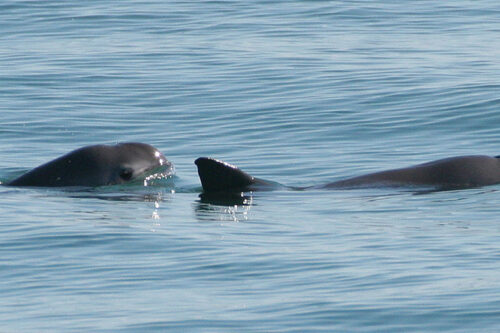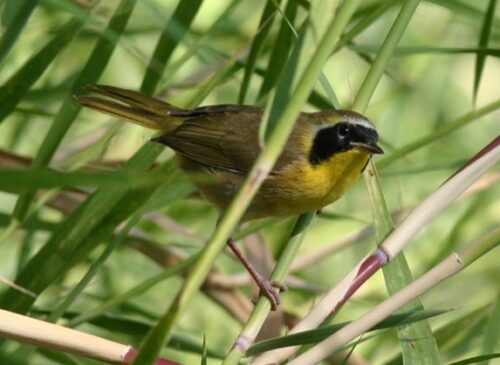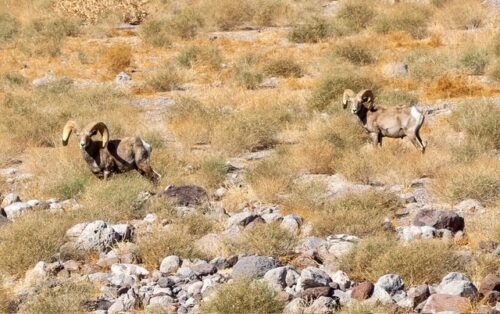The Baja peninsula is home to an incredible variety of life. From desert-dwelling plants to ocean giants, the peninsula shelters species found nowhere else. However, development, illegal fishing, climate change, and habitat destruction threaten many of these creatures. Here’s a closer look at some of the endangered species of Baja California, where they are found, and their current conservation status.
FAUNA

Vaquita (Phocoena sinus)
Status: Critically Endangered (IUCN)
Location: Upper Gulf of California (north of Baja California peninsula)
The vaquita, a small porpoise, is the most endangered marine mammal in the world, with fewer than 10 individuals remaining. Its only habitat is the shallow waters of the northern Gulf of California. Gillnets used for illegal totoaba fishing are the primary threat to its survival. Despite intense conservation efforts, the vaquita’s survival remains precarious.
Totoaba (Totoaba macdonaldi)
Status: Critically Endangered
Location: Northern Gulf of California
Endemic to the Gulf of California, this large fish is targeted for its swim bladder, prized in illegal Asian markets. Originally an abundant species, the totoaba is now considered endangered due to human-related threats that contributed to its population decline. Fishing for totoaba not only endangers its own survival but also that of the vaquita. The totoaba habitats consists of either brackish or marine waters depending on their life stage. They mainly inhabit coastal areas, but have been found in rocky reef areas. The totoaba is a demersal fish, spending time at the bottom of soft, sandy coastal areas.
Blue Whale (Balaenoptera musculus)
Status: Endangered (IUCN)
Location: Gulf of California, especially near Loreto and the Midriff Islands
Blue whales migrate through Baja’s waters, using the Sea of Cortez for feeding and calving. They migrate from the North Pacific, following their primary food source, krill. Their massive size doesn’t protect them from threats like ship strikes, noise pollution, and declining food sources due to warming seas. Estimates suggest that only 10,000 to 25,000 blue whales remain in the world’s oceans, a fraction of their pre-whaling numbers. There are ongoing efforts to protect blue whales and their habitat in the Sea of Cortez, including whale watching regulations and research to understand their behavior and migration patterns.

Eastern Pacific Leatherback Sea Turtle (Dermochelys coriacea)
Status: Critically Endangered (IUCN)
Location: Pacific coast of Baja California, particularly nesting beaches in Baja Sur
This giant sea turtle has declined by over 90% in recent decades. Baja California’s Pacific beaches are among its few remaining nesting sites. Threats include egg poaching, bycatch, and coastal development. Leatherbacks play a vital role in the marine ecosystem by consuming jellyfish, which can have a significant impact on fish populations. They are the largest living sea turtle species, reaching lengths of over 6 feet and weighing up to 2,000 pounds. There are heavy conservation efforts in Baja Sur through protecting nesting beaches and hatchling release programs.
Bald Eagle (Haliaeetus leucocephalus)
Status: Endangered in Mexico
Location: Remote highland regions in northern Baja California
Though populations have recovered in the U.S., the bald eagle remains endangered in Mexico. It nests in tall trees or cliffs near water sources but faces habitat degradation in Baja’s mountains. Their nesting population has been reduced and is now concentrated in a remnant population in Magdalena Bay, with limited data indicating successful reproduction.

California Condor (Gymnogyps californianus)
Status: Critically Endangered (IUCN)
Location: Northern Baja California, particularly in the Sierra de San Pedro Mártir
The California condor, once extinct in the wild, has made a slow but hopeful comeback thanks to intense conservation efforts. Baja California is one of the few regions where reintroduced populations are now soaring free. With a wingspan of nearly 10 feet, this scavenger plays a vital role in the ecosystem by cleaning up carrion. However, it still faces threats from lead poisoning (from ingesting bullet fragments in carcasses), power lines, and habitat encroachment. The reintroduction program in the Sierra de San Pedro Mártir is a collaborative effort between Mexican and U.S. conservation organizations and is one of the most promising success stories for endangered species in the region.

Belding’s Yellowthroat (Geothlypis beldingi)
Status: Endangered
Location: Wetlands and freshwater marshes near San José del Cabo and surrounding areas in Baja California Sur
This vibrant yellow songbird lives in reed-filled wetlands. Urban growth and water diversion are causing the loss of its already limited habitat. This warbler is endemic to Baja Sur in the few permanent freshwater bodies of the state, as it requires oasis with perennial water mirror and emergent vegetation, such as Tule and the Common Reed. The male differs from its closest relative, the more northern Common Yellowthroat (Geothlypis trichas), in being extensively yellow below, and having a yellow instead of white border around the black mask.

Peninsular Bighorn Sheep (Ovis canadensis cremnobates)
Status: Endangered
Location: Mountain ranges of the Baja California Peninsula, particularly the Sierra de San Pedro Mártir and Sierra de la Giganta
A sub species of the desert bighorn sheep, these agile mountain dwellers face threats from poaching, habitat fragmentation, and disease. They inhabit the desert slopes of the Peninsular Ranges, extending from the San Jacinto Mountains in California south into Baja and cross border conservation programs have been implemented to monitor and restore populations between populations in both countries.
FLORA
Cushenbury Buckwheat (Eriogonum ovalifolium var. vineum)
Status: Endangered in the U.S.; presence in northern Baja considered rare
Location: Mainly found in southern California, with potential range overlap in northern Baja
A small perennial herb with silvery foliage and tiny flowers, the Cushenbury buckwheat grows in limestone-rich soils. Mining and off-road activities are major threats.

Boojum Tree (Fouquieria columnaris)
Status: Vulnerable
Location: Central Baja California in the Vizcaíno Desert and Cataviña area
This surreal-looking tree is endemic to Baja California with just a few found in Sonora, Mexico as well. Though not critically endangered, it has a limited distribution and is susceptible to climate shifts and land development. Called cirio in Spanish, it is one of Baja’s most unique plants. The Spanish common name cirio means wax candle, and with the plant’s tall tapered appearance, the name is apropos. Although many grow straight up, some trees loop and bend, and in addition to the singular trunk, mature cirios may have several wide stems at the top as well. Belonging to the same family as ocotillos, the cirios are drought-deciduous, getting by on less than five inches of rain per year.
Baja Rose (Rosa minutifolia)
Status: Endangered
Location: Northwestern Baja California, especially coastal sage scrub areas near Ensenada and northward
The Baja rose is one of the smallest-leaved rose species in the world. Urban expansion and grazing have heavily reduced its native range. Some of its last strongholds are within protected coastal habitats. The plant has gray branches adorned in prickles, bright green toothed leaflets, and generally one flower per shoot with pink petals.
